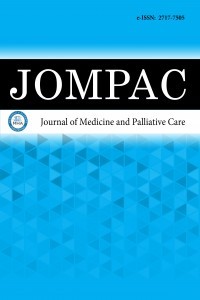1.
Yeboa DN, Evans SB. Contemporary breast radiotherapy andcardiac toxicity. Semin Radiat Oncol. 2016;26(1):71-78. doi:10.1016/j.semradonc.2015.09.003
2.
Demissei BG, Finkelman BS, Hubbard RA, et al. Cardiovascularfunction phenotypes in response to cardiotoxic breast cancertherapy. J Am Coll Cardiol. 2019;73(2):248-249. doi: 10.1016/jjacc.2018.10.057
3.
Coleman CN. International Conference on TranslationalResearch and Preclinical Strategies in Radio-Oncology (ICTR)--conference summary. Int J Radiat Oncol Biol Phys. 2001;49(2):301-309. doi: 10.1016/s0360-3016(00)01521-2
4.
Munro TR. The relative radiosensitivity of the nucleus andcytoplasm of Chinese hamster fibroblasts. Radiat Res. 1970Jun;42(3):451-470.
5.
Dewey WC, Ling CC, Meyn RE. Radiation-induced apoptosis:relevance to radiotherapy. Int J Radiat Oncol Biol Phys.1995;33(4):781-796. doi: 10.1016/0360-3016(95)00214-8
6.
Castro-Torres Y, Carmona-Puerta R, Katholi RE. Ventricularrepolarization markers for predicting malignant arrhythmiasin clinical practice. World J Clin Cases. 2015;3(8):705-720. doi:10.12998/ wjcc.v3.i8.705.
7.
Antzelevitch C, Shimizu W, Yan GX, et al. The M cell: itscontribution to the ECG and to normal and abnormal electricalfunction of the heart. J Cardiovasc Electrophysiol. 1999;10:1124-1152. doi: 10.1111/j.1540-8167.1999.tb00287.x
8.
Xia Y, Liang Y, Kongstad O, et al. Tpeak-Tend interval as an indexof global dispersion of ventricular repolarization: evaluationsusing monophasic action potential mapping of the epi- andendocardium in swine. J Interv Card Electrophysiol. 2005;14: 9-87.doi: 10.1007/s 10840-005-4592-4
9.
Errahmani MY, Locquet M, Spoor D, et al. association betweencardiac radiation exposure and the risk of arrhythmia in breastcancer patients treated with radiotherapy: a case-control study.Front Oncol. 12:892882. doi: 10.3389/fonc.2022.892882
10.
Kors Jan A, Henk J. Ritsema van Eck, Gerard van Herpen.The meaning of the Tp-Te interval and its diagnostic value. JElectrocardiol. 2008;41(6):575-580.
11.
Castro Hevia J, Antzelevitch C, Tornés Bárzaga F, et al. Tpeak-Tend and Tpeak-Tend dispersion as risk factors for ventriculartachycardia/ventricular fibrillation in patients with the Brugadasyndrome. J Am Coll Cardiol. 2006;47(9):1828-1834.
12.
Demirtas D, Sumbul HE, Bulut A, et al. Tp-e interval, Tp-e/QT and Tp-e/QTc ratio in hypertensive patients with primaryaldosteronism. Clin Exp Hypertens. 2020;42(1):93-98. doi:10.1080/ 10641963.2019.1632341
13.
Kongstad O, Xia Y, Liang Y, et al. Epicardial and endocardialdispersion of ventricular repolarization. A study of monophasicaction potential mapping in healthy pigs. Scand Cardiovasc J.2005;39(6):342-347. doi: 10.1080/14017430500188744
14.
Gheorghe ACD, Ciobanu A, Hodorogea AS, et al. Evolutionof electrocardiographic repolarization parameters duringantiandrogen therapy in patients with prostate cancer andhypogonadism. Cardiovasc Toxicol. 2020;20(4):390-400. doi:10.1007/s12012-020-09566-6
15.
Lee MS, Liu DW, Hung SK, et al. Emerging challenges ofradiation-associated cardiovascular dysfunction (RACVD) inmodern radiation oncology: clinical practice, bench investigation,and multidisciplinary care. Front Cardiovasc Med. 2020;7:16. doi:10.3389/fcvm.2020.00016
16.
Darby SC, Ewertz M, McGale P, et al. Risk of ischemic heartdisease in women after radiotherapy for breast cancer. N Engl JMed. 2013;368(11):987-98. doi: 10.1056/ NEJMoa1209825
17.
Wright, Jean L. Toxicities of radiation treatment for breast cancer:risks and management strategies. Springer, 2019.
18.
Taylor CW, Kirby AM. Cardiac Side-effects from breast cancerradiotherapy. Clin Oncol (R Coll Radiol). 2015;27(11):621-629.doi: 10.1016/j.clon.2015.06.007
19.
Tse G, Gong M, Wong WT, et al. The Tpeak - Tend interval asan electrocardiographic risk marker of arrhythmic and mortalityoutcomes: a systematic review and meta-analysis. Heart Rhythm.2017;14(8):1131-1137. doi: 10.1016/j.hrthm.2017.05.031
20.
Larsen RL, Jakacki RI, Vetter VL, et al. Electrocardiographicchanges and arrhythmias after cancer therapy in children andyoung adults. Am J Cardiol. 1992;70(1):73-77. doi: 10.1016/0002-9149(92)91393-i
21.
Herrmann J. Adverse cardiac effects of cancer therapies:cardiotoxicity and arrhythmia. Nat Rev Cardiol. 2020;17(8):474-502. doi: 10.1038/s41569-020-0348-1
22.
Chen C, Heusch A, Donner B, et al. Present risk of anthracyclineor radiation-induced cardiac sequelae following therapy ofmalignancies in children and adolescents. Klin Padiatr. 2009;221(3):162-166. doi: 10.1055/s-0029-120722
23.
Teng AE, Noor B, Ajijola OA, Yang EH. Chemotherapy andradiation-associated cardiac autonomic dysfunction. Curr OncolRep. 2021;23(2):14. doi: 10.1007/s11912-020-01013-7
24.
Gomez DR, Yusuf SW, Munsell MF, et al. Prospective exploratoryanalysis of cardiac biomarkers and electrocardiogramabnormalities in patients receiving thoracic radiation therapywith high-dose heart exposure. J Thorac Oncol. 2014;9(10):1554-1460. doi: 10.1097/JTO.0000000000000306
25.
Zamorano JL, Lancellotti P, Rodriguez Muñoz D, et al. ESCScientific Document Group. 2016 ESC Position Paper on cancertreatments and cardiovascular toxicity developed under theauspices of the ESC Committee for Practice Guidelines: TheTask Force for cancer treatments and cardiovascular toxicityof the European Society of Cardiology (ESC). Eur Heart J.2016;37(36):2768-2801. doi: 10.1093/eurheartj/ehw211
26.
Caron J, Nohria A. Cardiac toxicity from breast cancer treatment:can we avoid this? Curr Oncol Rep. 2018;20(8):61. doi: 10.1007/s11912-018-0710-1

